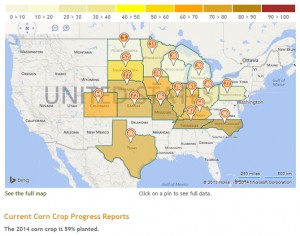 The 12th International Conference on Precision Agriculture (ICPA) will be held July 20-23, 2014 at the Hyatt Regency in Sacramento, CA. ICPA is the premier scientific conference on precision agriculture. Conference sponsors include: E & J Gallo Wineries, Monsanto, DupontPioneer, and Springer.
The 12th International Conference on Precision Agriculture (ICPA) will be held July 20-23, 2014 at the Hyatt Regency in Sacramento, CA. ICPA is the premier scientific conference on precision agriculture. Conference sponsors include: E & J Gallo Wineries, Monsanto, DupontPioneer, and Springer.
“We selected the top research papers from around the world for the conference. With session chairs in precision water management, precision horticulture, unmanned aerial vehicles, precision conservation, precision livestock, remote sensing, and data standards, the oral program reflects the diversity of our members’ interests,” said Dr. John Stafford, President of ISPA.
The program also features talks on practical applications of the latest technology in crop and livestock production. Through the support of the major sponsors, the conference will feature a track for practitioners in addition to the five tracks on precision ag research.
For international and domestic visitors to the area the conference has partnered with the University of California-Davis to organize a post-conference tour for Wednesday afternoon after the closing session. The tour will feature area stops on UAVs, high-tech tomato production, precision irrigation, and imaging systems in wine grape production. Other options for exploring the area are available, too.

 Spring field operations are well underway and Ag Leader’s Technical Support department is buzzing!
Spring field operations are well underway and Ag Leader’s Technical Support department is buzzing! 










